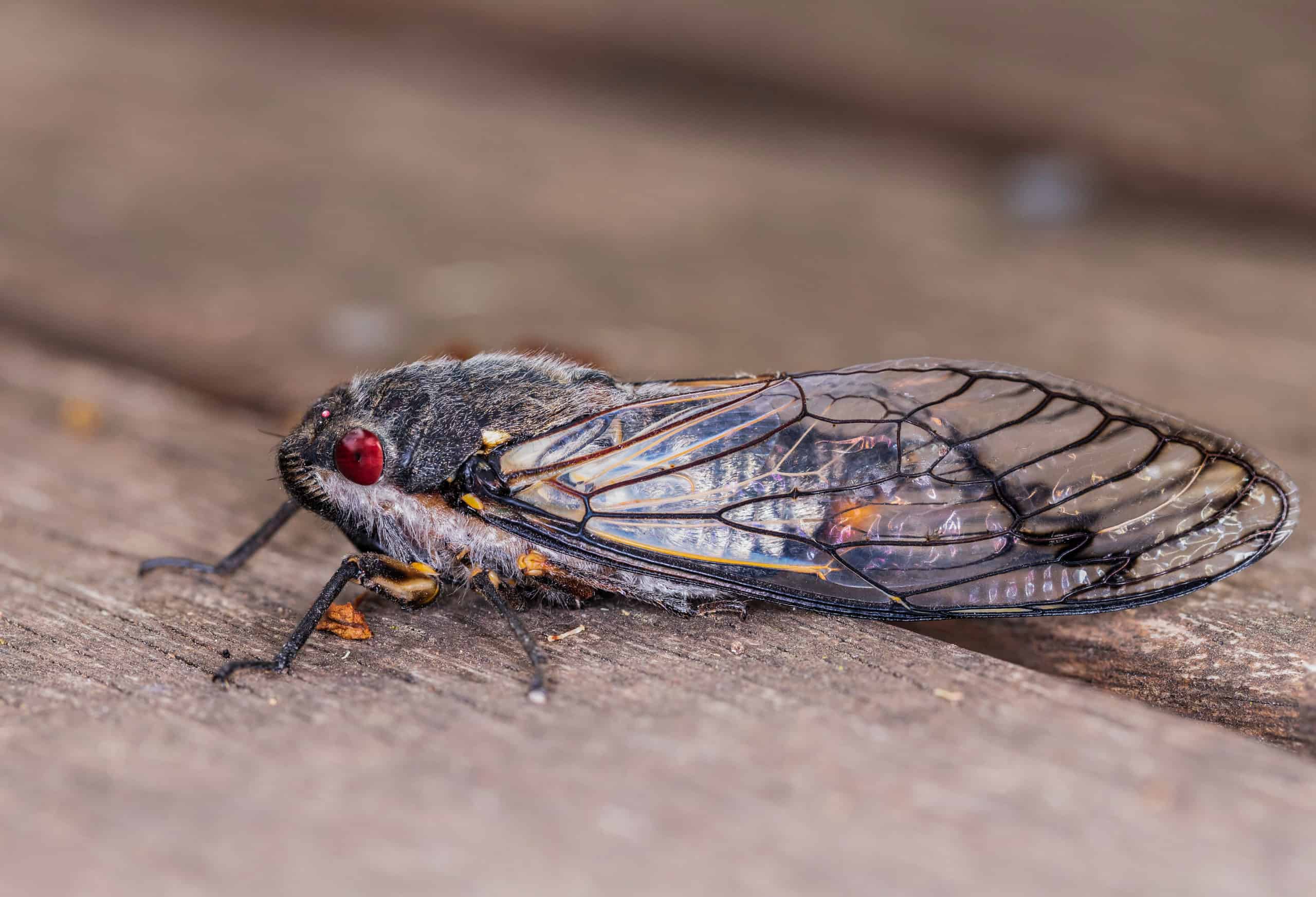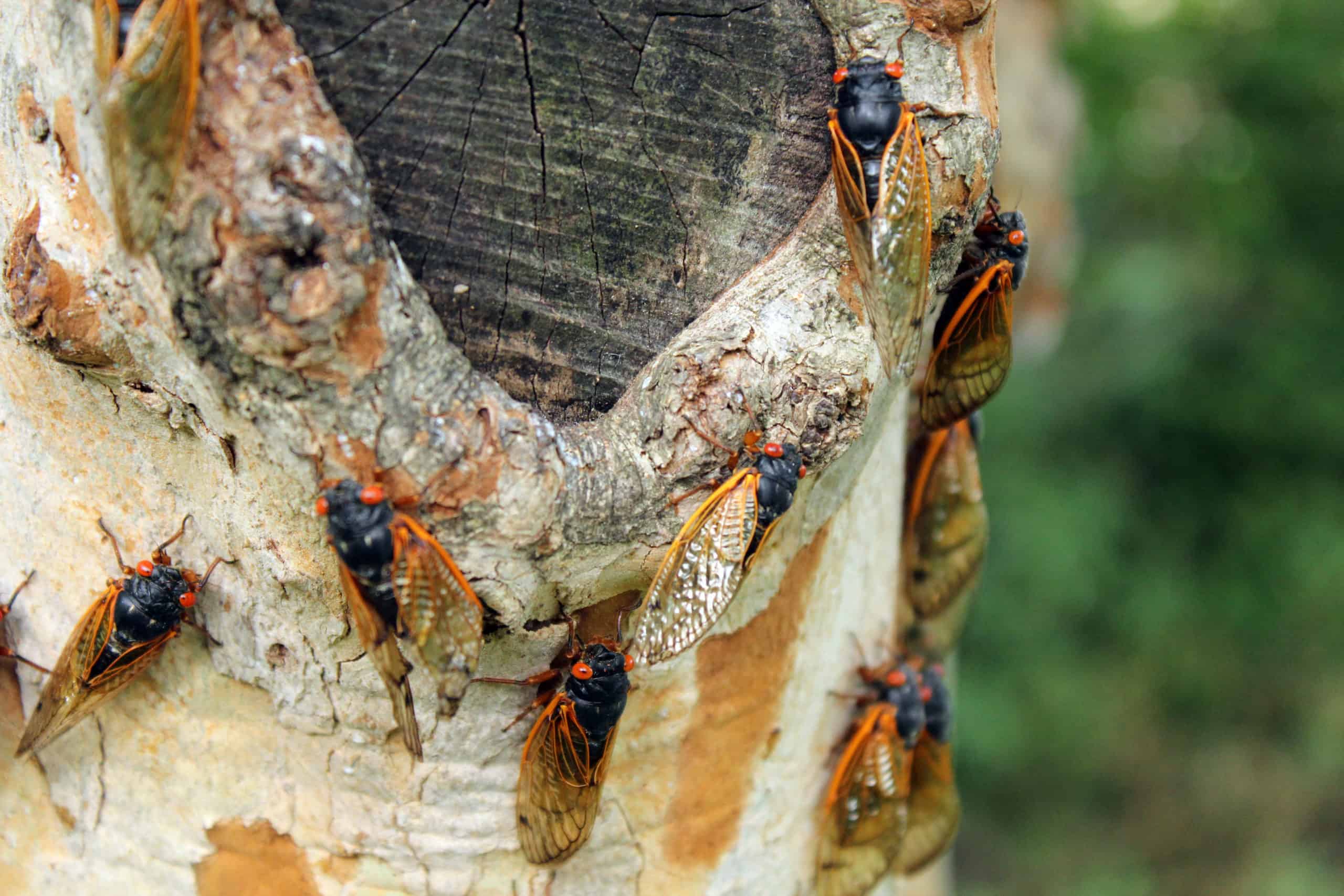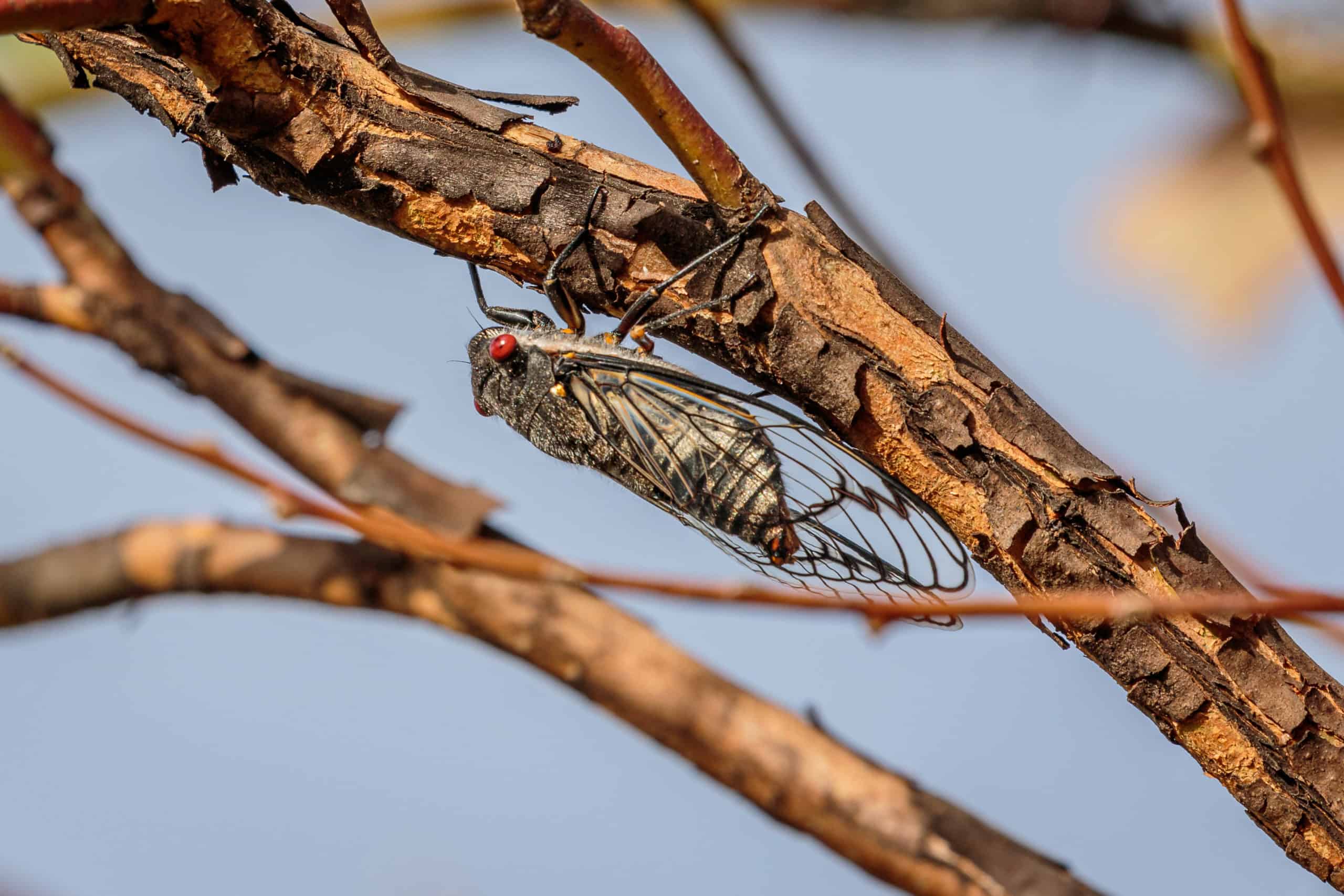Cicadas – The Year of Reprieve
Cicadas – The Year of Reprieve
Cicadas 101
Cicadas are insects that belong to the order Hemiptera, meaning that they are considered “true bugs.” These bugs are fairly large measuring up to 2.25 inches in length. Their semi-transparent wings extend beyond the length of their bodies, folded in a tent-shape over their backs, and they have large, compound, bulging eyes. Most cicadas have bodies that are green, brown or black, and their eyes can be brown, black, dark grey, or even a striking red.
While these bugs may be annoying, cicadas are very harmless insects that don’t sting, bite, nor want to inhabit your home. However, they are well known for their loud, buzzing songs but, if you were in Virginia last spring/summer… you’re no stranger to this.

2020’s Cicada Explosion
Last year, a brood of cicadas known as brood IX emerged in massive numbers. If you lived in one of the “hot-spots” during this time, their presence was utterly unavoidable. In April, holes appeared in the ground where the cicadas began to emerge, growing in population into May as they crawled their way up trees. By Memorial Day, thousands of shells from their shed skins could be found littered across the ground and on the sides of trees as their thrumming chirps permeated through the air. In the early days of June, they continued to swarm, but as the month wore on, they slowly dwindled away, and the shockingly large population of bugs all but disappeared by our 4th of July celebrations.

Why This Year is Different
There are roughly 3,400 different subspecies of cicadas, of which, there are two primary sub-groups: annual cicadas, and periodical cicadas. Annuals are seen just about every year, while periodical cicadas live underground for extensive periods of time, only emerging once in 10 to 20 years. Depending on these particular subspecies, the life cycles of cicadas can vary drastically from 3 years to even 17 years long. Regardless of the species, the majority of their lives is actually spent underground as young nymphs, where they feed on the natural fluids contained within the roots of trees and plants. When each species emerges, they go through a molting process, effectively transitioning into their adult stage of life.
Virginia’s brood IX emerged in 2020 after a 17-year-long hibernation period. Experts at Virginia Tech describe the surprisingly long marvel of their brood cycle saying, “Research and mathematical modeling suggest that the length of these brood cycles could be attributed to predatory avoidance. When the cicadas emerge, the amount of biomass they provide could serve as a food source for potential predators to take advantage of. It is theorized that these cicadas have evolved to avoid synching up with predator cycles by having a 13- or 17-year prime number emergence interval.”
This year, another brood known as brood X is expected to appear. Luckily for us, however, their populations are not expected to hit Virginia as drastically as last year and will be spread across the following states: Delaware, Georgia, Illinois, Indiana, Kentucky, Maryland, Michigan, New Jersey, New York, North Carolina, Ohio, Pennsylvania, and Tennessee. In addition to this, we will be seeing the annual cicadas emerging once again albeit with smaller populations. So, while we will still be seeing our fair share of these melodic bugs in 2021, it will be a nice reprieve from last year’s cicada explosion.

Citations
Brood X cicadas map: Where you will find them in 2021 (2021) The Enquirer. USA Today Network. Available at: https://www.cincinnati.com/story/news/2021/05/06/brood-x-cicadas-map-what-states/4946803001/ (Accessed: May 18, 2021).
Brown, W. (2014) Insect of the Month: Cicadas, Texas A&M University’s College of Agriculture and Life Sciences – Department of Entomology. Available at: https://entomology.tamu.edu/2014/06/24/insect-of-the-month-cicadas/ (Accessed: October 2020).
Cicada (2017) Amateur Entomologists’ Society . Available at: https://www.amentsoc.org/insects/glossary/terms/cicada (Accessed: October 2020).
Levy, M. (2020) Cicadas Are Delightful Weirdos You Should Learn to Love, Smithsonian Magazine. The Smithsonian Institute. Available at: https://www.smithsonianmag.com/science-nature/what-are-cicadas-180975009/ (Accessed: October 2020).
Myatt, K. and Klein-Davis, S. (2021) 17-year cicadas: Not our problem this time, Roanoke Times. Available at: https://roanoke.com/news/local/17-year-cicadas-not-our-problem-this-time/article_8ef94bb0-b4bb-11eb-bcdc-1374a7b824c5.html (Accessed: May 18, 2021).
National Geographic Staff (2019) Cicadas, National Geographic. Available at: https://www.nationalgeographic.com/animals/invertebrates/group/cicadas/ (Accessed: October 2020).
Orchard Cicada (no date) Washington State University Department of Entomology. Available at: https://entomology.wsu.edu/outreach/bug-info/cicada/ (Accessed: October 2020).
Rogers, J. (2020) Get Set for the Return of Cicadas and Their ‘Alien-like Wail’ After 17 Years Underground, Fox News. Available at: https://www.foxnews.com/science/return-cicadas-alien-like-wail-after-17-years-underground (Accessed: July 2020).
Roos, D. (2013) Should Farmers & Gardeners Worry About 17-Year Cicadas?, North Carolina State University. Available at: go.ncsu.edu/readext?212433 (Accessed: July 2020).
Sargent, C. (2020) Here Come the Cicadas! At Least for Some of Us, NC State University College of Agriculture and Life Sciences. Available at: https://cals.ncsu.edu/news/here-come-the-cicadas-at-least-for-some-of-us/ (Accessed: October 2020).
Keep Pests Out of Your Holiday Gatherings
Keep Pests Out of Your Holiday Gatherings Keep Pests Out of Your Holiday Gatherings Summary: The holiday season is all about good food [...]
Cold Weather vs. Warm Weather Infestations: How Temperature Shapes Pest Activity
Cold Weather vs. Warm Weather Infestations: How Temperature Shapes Pest Activity Cold Weather vs. Warm Weather Infestations: How Temperature Shapes Pest Activity Summary: [...]
Garden Pests Do Not Hibernate Indoors – How They Attack Houseplants And What To Do
Garden Pests Do Not Hibernate Indoors – How They Attack Houseplants And What To Do Garden Pests Do Not Hibernate Indoors – How They Attack [...]
The Scariest Pests (And Why They Freak Us Out)
The Scariest Pests (And Why They Freak Us Out) The Scariest Pests (And Why They Freak Us Out) Summary: A practical, homeowner-friendly guide [...]
Favorite Foods of Rats and Mice
Favorite Foods of Rats and Mice Favorite Foods of Rats and Mice Summary: Rats and mice are surprisingly picky about what they eat—especially [...]
Where Do Spiders Like to Hide? A Locals’ Guide to Sneaky Spider Spots (and What to Do About Them)
Where Do Spiders Like to Hide? A Locals’ Guide to Sneaky Spider Spots (and What to Do About Them) Where Do Spiders Like to Hide? [...]

